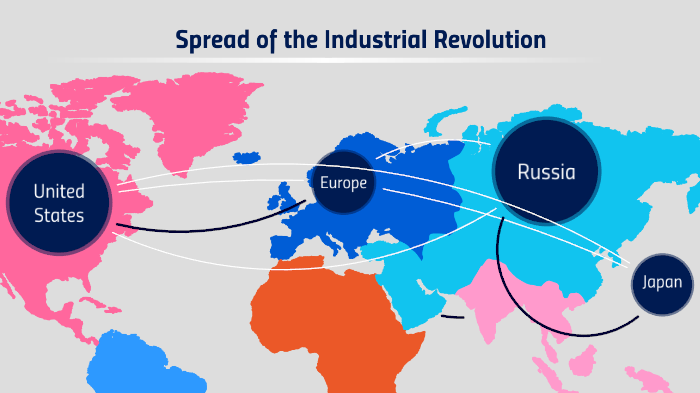
The Industrial Revolution stands as one of the most significant turning points in human history, forever altering the way we live and work. It was a time of great innovation and progress, where new technologies and manufacturing processes emerged, laying the foundation for modern industrialized societies. But where did this momentous revolution begin? To answer this question, we must embark on a journey back in time to uncover the birthplace of this transformative era. Delving into historical records and tracing the origins of key industries, we will unravel the mystery behind where exactly the Industrial Revolution took its groundbreaking first steps.
Pre-Industrial Society:

In order to understand the origins of the Industrial Revolution, it is crucial to delve into the pre-industrial society that laid its foundation. This society was primarily rooted in agriculture and handicrafts, where the majority of the population lived and worked in rural areas.
- Agriculture formed the backbone of this society, with farmers cultivating crops and rearing livestock. The efficiency and productivity of agricultural practices steadily increased over time through various innovations, such as crop rotation techniques and selective breeding of animals. This allowed for surplus food production, leading to population growth and a shift towards specialization in other trades.
- Handicrafts also played a significant role in pre-industrial society. Skilled artisans crafted goods by hand using traditional methods passed down through generations. These craftsmen produced a wide range of products, including textiles, ceramics, metalwork, and woodworking. Their intricate craftsmanship not only satisfied local demands but also gained recognition internationally for their quality.
The interplay between agriculture and handicrafts formed a strong economic foundation that would eventually give rise to the Industrial Revolution. Through innovative agricultural practices and skilled craftsmanship, pre-industrial societies developed important techniques that would serve as building blocks for future technological advancements.
The First Industrial Revolution:

The First Industrial Revolution was a turning point in history, and it all began in Britain. The country’s natural resources, such as coal and iron ore, played a crucial role in fueling the revolution. Coal powered the steam engines that drove machinery, while iron ore was used to build factories and produce new tools and equipment.
But it wasn’t just the availability of resources that set Britain apart. The country also had a highly skilled workforce and a culture of innovation and entrepreneurship. Skilled artisans were able to develop new techniques and machinery, while entrepreneurs were willing to invest in these new technologies.
Furthermore, Britain’s political stability provided a conducive environment for industrialization to flourish. Property rights were well protected, allowing individuals to profit from their inventions and ideas without fear of losing them. The British government also actively supported industrialization through policies such as enclosure Acts that promoted agricultural efficiency.
These factors combined made Britain the perfect incubator for the industrial revolution. It started with textile manufacturing but quickly expanded into other industries such as mining, metallurgy, transportation (steam-powered trains), and more.
The Spread Of Industrialization To Other Countries

The Industrial Revolution was not confined to a single nation; rather, it spread like wildfire across continents, transforming the economic and social landscapes of countries far beyond their birthplace. While Britain may have been the epicenter of this seismic shift, other nations soon caught on to the possibilities of industrialization. Germany in particular emerged as a powerhouse in industrial production during the late 19th century. Encouraged by an influx of highly skilled workers from Britain, German entrepreneurs capitalized on new technologies and manufacturing methods to establish their own thriving industries.
Not too far away, France was also quick to embrace industrialization. The French government recognized the potential benefits that came with modernizing their economy and invested heavily in infrastructure projects such as railways and canals. As a result, France experienced rapid industrial growth in sectors like textiles, iron, and steel production. This expansion laid the foundation for its later dominance in industries such as fashion and luxury goods.
Across the Atlantic Ocean, America was undergoing its own transformation into an industrial superpower. Taking cues from British innovation but adding their own unique twist, American entrepreneurs harnessed vast natural resources and abundant labor to create industries that would shape the future of the nation. From railroads connecting coast-to-coast to massive factories churning out consumer goods at unprecedented rates, America’s economic rise during this period showcased both technological prowess and entrepreneurial spirit.
Conclusion:
The impact and legacy of the Industrial Revolution cannot be overstated. It transformed every aspect of society, from the way goods were produced to the way people lived and worked. One of the most significant impacts was the growth of cities and urbanization. As factories sprung up around industrial centers, people flocked to them in search of employment opportunities. This led to overcrowding, poor living conditions, and a rise in social and economic inequalities.
Another major legacy of the Industrial Revolution is its impact on technology and innovation. The invention and improvement of steam engines, machines, and new manufacturing processes revolutionized the industry and allowed for mass production on an unprecedented scale. This not only increased productivity but also shaped future technological advancements in fields such as transportation, communication, and medicine.
However, it is important to note that while the Industrial Revolution brought about immense changes that contributed to our modern world, it also had negative consequences that should not be overlooked. The exploitation of workers under harsh working conditions was widespread during this time period. Child labor was prevalent in factories where children as young as six or seven years old were forced to work long hours for little pay.
In conclusion, although the Industrial Revolution brought about remarkable progress in technology, industry, and society as a whole, it came at a great cost. Its impact continues to shape our world today; however, we must also acknowledge the ethical questions raised by these advances and strive for a more equitable future as we build upon their legacy.
Also Read: Unveiling The Hidden Secrets Of On-Page Optimization For SEO Success





